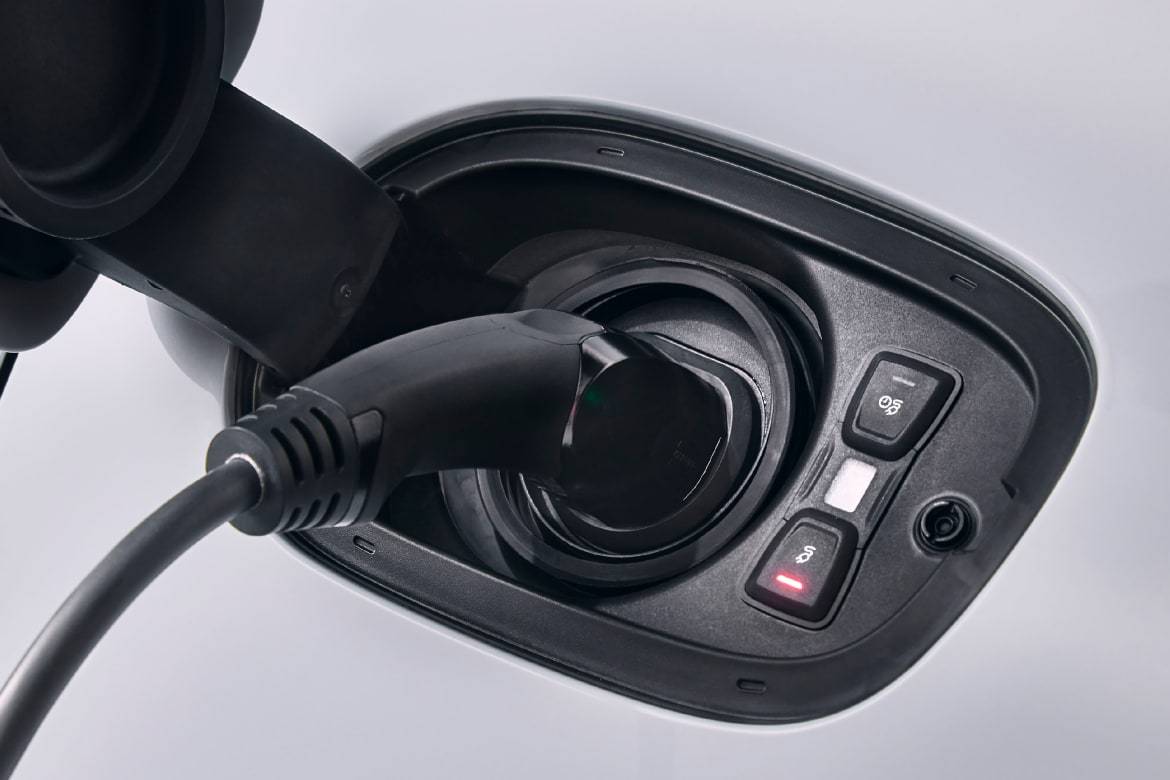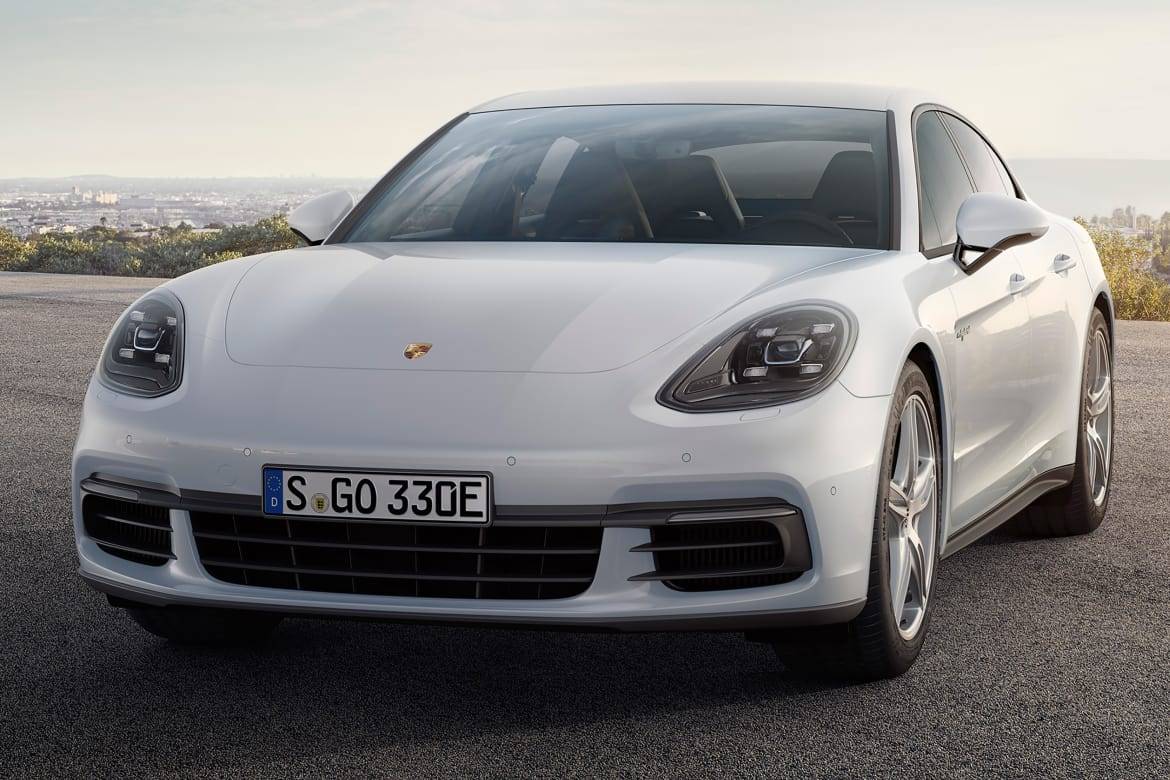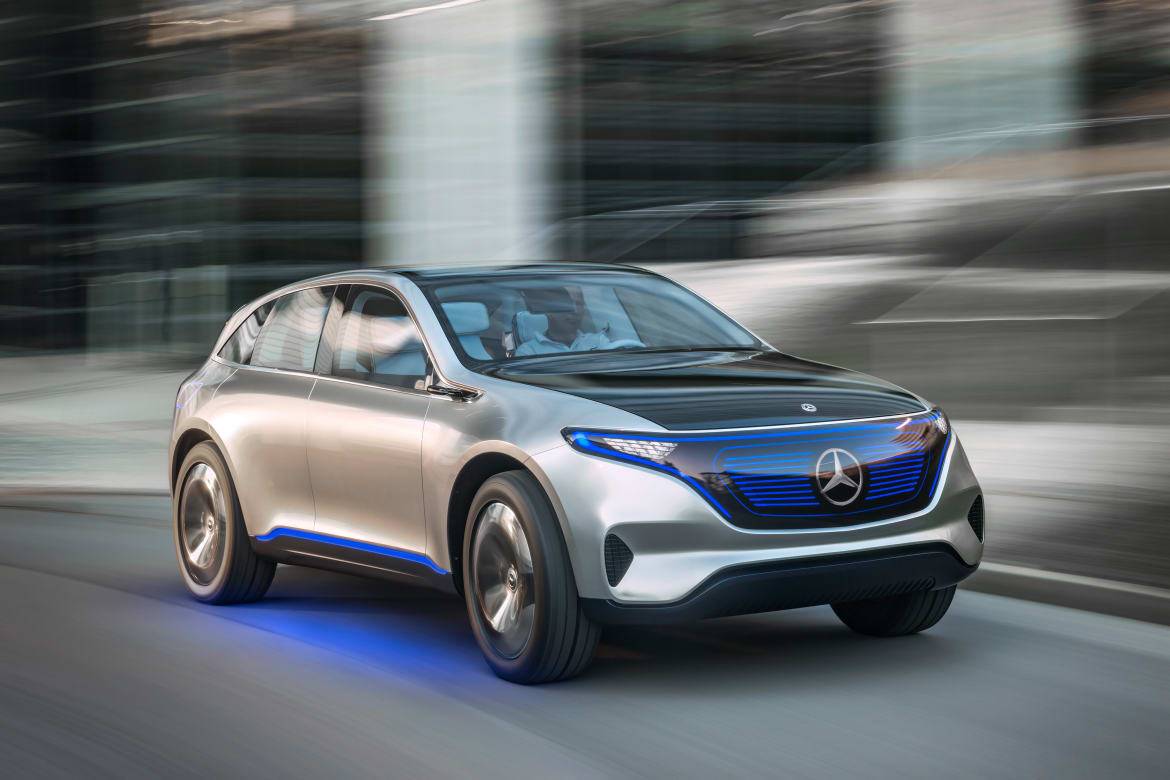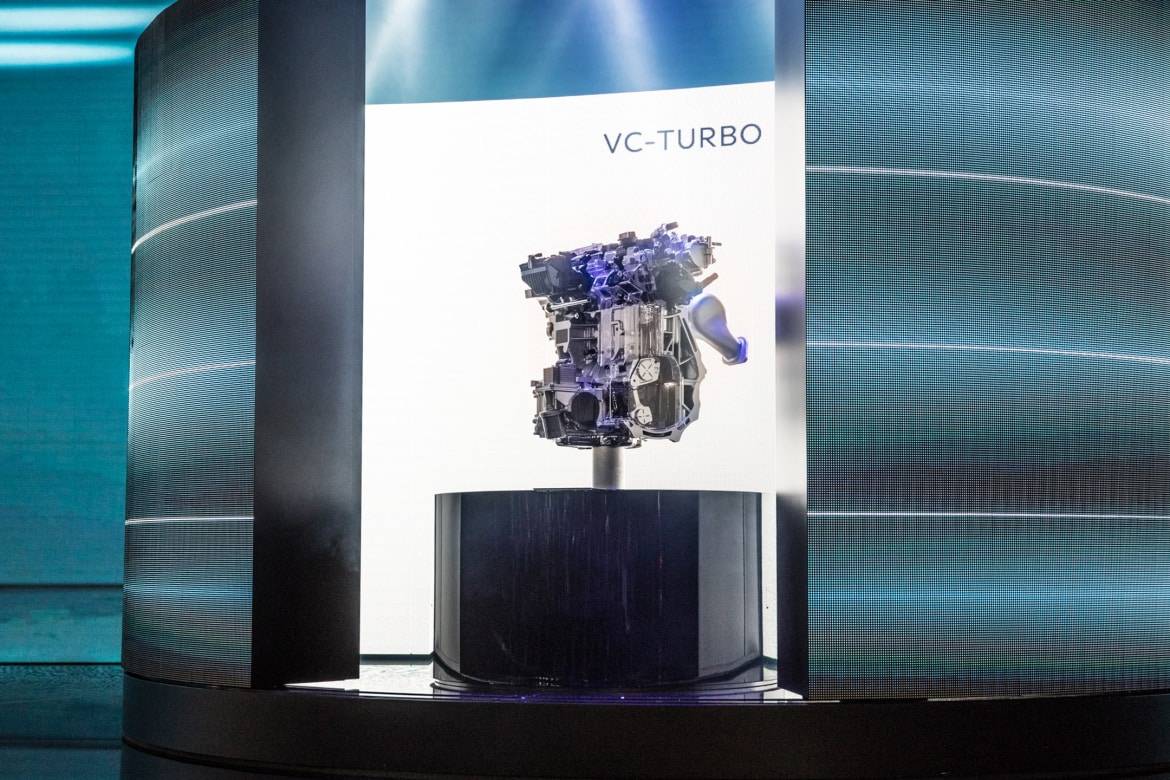Best Car Tech at the 2016 Paris Motor Show

CARS.COM — From Porsche’s completely re-engineered and hybrid-powered Panamera sedan to Volkswagen’s first purpose-built electric vehicle, the I.D. Concept, the 2016 Paris Motor Show proves the automotive world is on the verge of radical change. How we drive, and how our cars will someday drive us, is a question being asked by nearly every major manufacturer.
Related: 2016 Paris Motor Show
Zero-emission EVs and autonomous vehicles are no longer a sideshow to the main event. In Paris, they are center stage and pointing toward a seismic shift in the car world.

Porsche’s High-Performance, High-Mileage Balancing Act
Can Porsche, a brand forged in the world of sports cars, balance its sporting history with the need to pursue alternative drivetrain solutions?
“In general, we are convinced that hybridization and electrification of the drivetrain is a kind of performance kit,” Michael Steiner, research and development member of the Executive Board at Porsche, told Cars.com, using the context of Porsche’s new 2018 Panamera 4 E-Hybrid sedan, which made its global debut in Paris. “We underlined that with the 918 [supercar] that this offers really outstanding performance. And in terms of performance, hybridization supports lap times and race capabilities.”
When it came to updating the hybrid-powered Panamera, Steiner said parallel goals were to increase efficiency while simultaneously boosting overall speed.
“We felt that in terms of performance, there was room for improvement. First, we decided not to add more weight to the car compared to the last Panamera Hybrid.” Power comes from a twin-turbo 2.9-liter V-6 that provides 330 horsepower and 331 pounds-feet of torque. Coupled with the car’s new electric motor and 14.1 kilowatt-hour lithium-ion battery pack, total output jumps to 462 hp and a whopping 516 pounds-feet of torque. Power is routed to all four wheels courtesy of an eight-speed dual-clutch automatic transmission.
Exact mileage figures for the U.S. market have not been released, though Porsche has quoted electric-only driving range at 31 miles in the latest Panamera hybrid — nearly double that of the outgoing model.
Not cannibalizing the trunk’s cargo capacity was another important aspect of boosting the electric capability of the 2018 Panamera 4 E-Hybrid without sacrificing practicality. It also helps that the latest Panamera, no matter its chosen powertrain, is notably tauter and sleeker-looking than before. The Porsche sedan’s exterior is much more closely aligned to the swept-back shape of the brand’s iconic 911 sports car.
What about the move towards self-driving vehicles? Steiner said that driving assistance systems — such as emergency braking or parking systems — are already part of the Porsche portfolio. Expanding these driving interventions will occur only “in driving situations where it is no longer fun to drive,” such as traffic jams or parking in a crowded lot.
“However, this will never be the core of our brand,” he said.

The Birth of the Mercedes-Benz EV Family
The Mercedes-Benz Generation EQ concept, a fully electric SUV making its global debut in Paris, represents the first step in an entirely new family tree of Mercedes-badged electric vehicles. While the Generation EQ concept doesn’t break much new ground in terms of exterior design — unless you’re a fan of blue neon lighting — the technology beneath its skin will reshape the German luxury brand’s product range.
Jürgen Schenk, director of E-Drive system integration at Mercedes-Benz parent company Daimler, told Cars.com that much more is to come from Mercedes’ move into EVs. “The architecture [in the Generation EQ] goes from the compact car segment up to the S-Class segment,” Mercedes’ full-size luxury sedan. Schenk says an electric SUV hits the “sweet spot” of the brand’s product portfolio by targeting the red-hot luxury class.
While no exact production date has been slated for a production version of the Generation EQ, Schenk said that this EV won’t be alone for long. “It will be followed by more than 10 variants in other vehicle segments until 2025. It’s only the beginning.”
Powering the Generation EQ is a 70-kWh battery pack and twin electric motors mounted at the front and rear axles. Total output is a stout 402 hp and 516 pounds-feet of torque. This powertrain backs up the idea that the architecture beneath the EQ is meant for a wide range of vehicles, stretching from powerful SUVs and luxury sedans to a fully electric sports car.
As for the Generation EQ, Schenk confirmed the show car is “very close” to the production model. Expect items like the oversized wheels and lack of side mirrors to fade away for consumer models. Those glowing blue graphics could remain, believe it or not. Schenk issued a coy “maybe … but not when the vehicle is in motion,” when asked if the distinctive design feature would someday glow brightly in a dealership lot.

Lexus Combines Art, Engineering in One Wild Compact SUV
Lexus has a newly minted reputation for being bold, particularly when it comes to adding sharp edges and angles to its lineup. The UX Concept happens to be part dream machine, part carefully calculated volley into the booming compact SUV segment.
Cars.com spoke with Stephan Rasmussen and Alexandre Gommier, two of the lead designers behind this attention-grabbing SUV, regarding some of the thinking that went into the UX Concept. At the start, Rasmussen said, even something as essential as the need for A-pillars was open to debate. “At the beginning, we said we didn’t want an A-pillar at all.” By deconstructing the posts on either side of the windshield, he said the design helps “give the car strength” while having the benefit of being thinner and providing better outward visibility.
Inside, the UX Concept boasts a 3-D holographic display in front of the driver and in the middle of the dashboard. Touchscreens are so last generation, apparently.
“The customer of this car is young … they’re really connected, everywhere. For them, in the interior, I want them to be able to play with the layout of the car,” Gommier said. While the holographic technology inside the UX Concept is actually feasible, the cost and complexity means it won’t appear in a Lexus product anytime soon. The same can be said for the front seats, a riotous web of leather straps woven onto a metal frame, as well as the lounge-like rear bench.
“If we don’t challenge now, there’s not going to be a future with something new,” Rasmussen said. “The design might look crazy … but it’s meant to push boundaries.”

Infiniti Powers Itself Into the Future
Smaller is better, less is more. That might as well be the theme of the Infiniti stand, where a compact turbocharged 2.0-liter engine sits in the center spotlight. That kind of auto show acreage is usually reserved for a new concept or production model which, it’s worth mentioning, Infiniti has in the shape of the QX Sport Inspiration concept — a hint at the next-generation QX50 SUV.
The bigger news is the VC-Turbo engine alongside it. At 2.0 liters in capacity, this turbocharged four-cylinder packs V-6 levels of power into a tinier, more efficient package. According to Infiniti, the engine delivers 268 hp and 288 pounds-feet of torque while returning mileage figures reported to be 27 percent better than a V-6 with the same power output.
The secret is variable compression which, in theory, provides the best of all worlds. As the pistons go up and down, the compression ratio varies. In layman’s terms, this allows the motor to run at maximum efficiency, whether in the middle of a relaxed cruise or if the driver is stomping on the gas pedal.
“A key factor here is that the cost for increased fuel economy has become higher and higher,” said Alain Raposo, a director of engineering at Infiniti parent Renault-Nissan Alliance. This move toward a variable compression engine — a long-held goal of many auto companies — acts as a sort of budgetary bridge between gasoline-powered vehicles and costlier electrics.
The VC-Turbo is slated to join the Infiniti lineup by 2018, though no announcement has been made as to which models will be the first to offer it.
Featured stories



